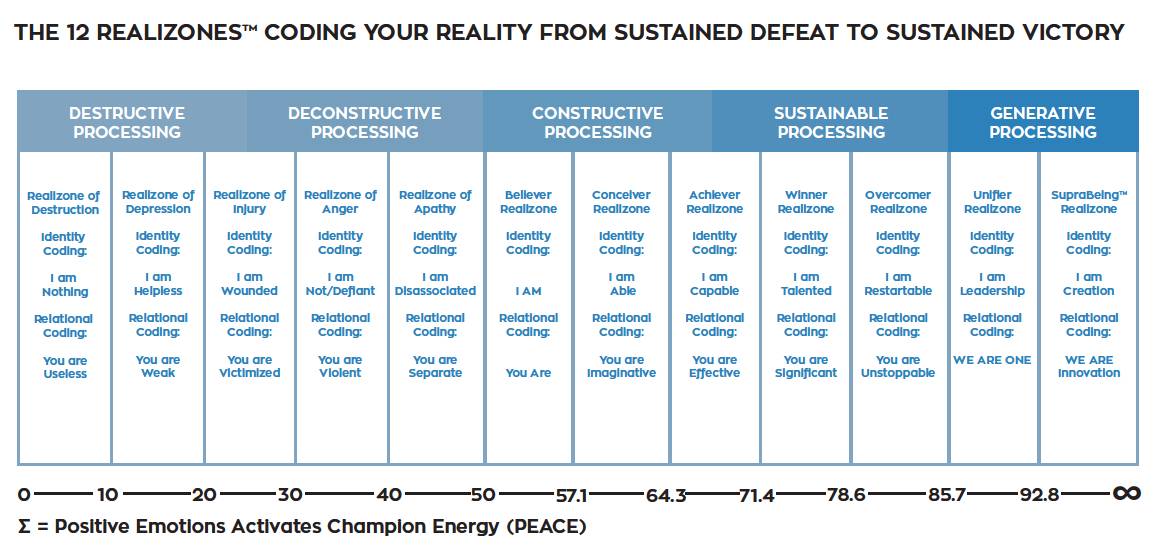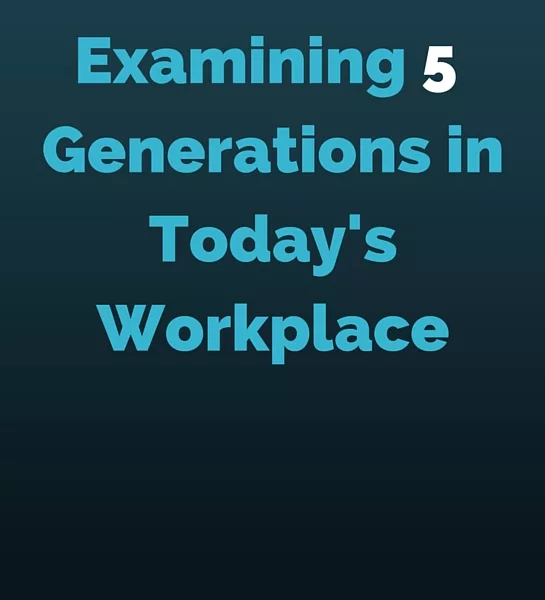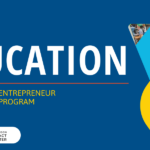Human beings are constant meaning-makers. We take our experiences, interactions, and lessons in life and form our own personal zone of reality around us that shapes our future lessons, interactions, and experiences with the world outside of our own mind. We refer to this zone of reality as a “Realizone” – a framework of our physical, mental, and emotional well-being that helps us process and create our own thoughts, beliefs, and ideals of ourselves, our community, and world. We have distinguished 12 Realizones that help decipher the personal coding at play in our lives; five of them can be seen as negative and seven can be seen as positive. In observing the interactions between each living generation, we have found that each generational group fits securely into one of the positive Realizones, and this framework can be used to further understand and clarify the collective role each generation plays in creating our shared future.
In general, there are five living generations over the age of 18 in the United States: the GI Generation (1920 – 1926), the Silent or Builder Generation (1927 – 1945), the Baby Boomers (1946 – 1964), Generation X (1965 – 1979), and the Millennials (1980 – 2000). Each of them has had a different set of collective experiences that has influenced and coded their generational ideals of success and their relationship to money. While each generation feels separate from the others, we must remember that our collective experiences are the direct result of the actions of the generations that came before. In this, each generation is an expression of the trajectory of this country, and although we categorize each by the range of their birth years, we may be better served by looking at the attributes that arise in each generation as a gauge of the output of an entire interconnected cultural system.
Each generation has set the stage for the Millennial Generation, and instead of looking at each generation as a separate entity, we can view our cultural generational output as an indicator of our shared cultural identity, and therefore, we can pool together the powerful and positive traits of each generation to create the future that works for all of us. We can be as imaginative as the GI Generation and as effective in building new systems and infrastructure as the Builder Generation. We can understand the significance we have as individuals in creating conscious and sustainable successes like the Boomers, and we can be unstoppable in our pursuit of a world that works, just as we have seen Gen Xers overcome the challenges they faced. Finally, we can each become one community in the way the Millennials see themselves unified as one, and in doing so, we can be a national and global community of innovators that transform the world and make it work for all people and the planet.

GI GENERATION
In the framework of the 12 Realizones, the GI Generation resides in the Conceiver Realizone. Raised in the era of the great World Wars and the Great Depression, the GIs were still able to imagine a prosperous and free future for America, and gave their youthful zeal to the New Deal and their fighting abilities to our country in WWII. The GIs, whom some refer to as the Greatest Generation, were said to have saved the world and built a nation; they were rewarded for their abilities and imagination with the legendary “happy days” of prosperity that followed WWII.
BUILDER GENERATION
The Builder Generation moved into the Achiever Realizone, and is a generation that transitioned from constructing our views of prosperity to sustaining the prosperity we were experiencing post war. Also referred to as the Silent Generation due to their strong trans-generational common values and being raised during a time great conformity, the Builders took the broader view of our abilities as Americans professed by the GI Generation and transformed those into specialized and trained capabilities – capabilities generally pledged by men to one corporation for life. This loyalty to company was returned with a lifetime of job security, and they became the richest, most free-spending retirees in history. The first hopeful actions of the Civil Rights and Feminism movements were established in this generation, as one’s ability to achieve according to his or her capabilities began to be internalized by the American population.
BABY BOOMERS
The Baby Boomers continued to sustain the beliefs constructed by the GIs and sustained by the Builders, and find themselves securely within the Winner Realizone. As a nation, we continued to achieve great prosperity, and our power and presence in the world continued to expand. Boomers see themselves as talented, are career-driven (both men and women), and their numbers continue to make them a significant factors in the world. This sense of self-importance may have caused Boomers to rebel against the military-grade conformity of their parents, as was reflected in their sense of protest, as opposed to duty, in regard to the Vietnam War. This sense of significance was the impetus for the Civil Rights and Feminist Movements that took shape in their lifetime. Boomers may never fully retire, making a multi-generational workforce that hasn’t existed previously.
GENERATION X
Generation X is the final generation attempting to sustain the prosperity view of America constructed by previous generations, though they feel that many of the institutions that supported and benefited the generations before (family, churches, business, and government) have failed them. Gen X resides in the Overcomer Realizone, and they do feel they must overcome. Many of them were “latch-key kids” who raised themselves with two working parents, have had to restart their careers after two economic recessions already in their lifetimes, and are the first generation not doing better economically than previous ones. Gen X feels misunderstood and overlooked in the workplace, which continues to be run by their parents who won’t leave, and which is increasingly dominated by their entering children, who seem to monopolize the attention of marketers and brands. Their independence and mistrust of institutions has created an unstoppable entrepreneurial spirit within them, and they have passed this forward to their children. They are also well aware that the means to prosperity as constructed by their grandparents is not working, and a new system must be created.
MILLENNIALS
Finally, the Millennial Generation realizes that the view of the world sustained over the last several generations is broken, and the only way to fix it is to come together as one and generate a new way of interacting with the world. Inside of the Unifier Realizone, Millennials are more multicultural, progressive, and tolerant. They are collaborative by nature, feel like a generation, and have high expectations that they can reshape our future. Their unhindered access to information makes them forceful with their opinions, and they do not see their youth as a detriment to their ability to lead. Millennials possess the political and economic power that comes with their numbers, global connectedness, and social motivation to examine long-standing institutions and reshape them to what is meaningful to them. In the workplace, they value flexibility, purpose, and co-creation over monetary compensation, and they will leave or never join companies that do not align with their views of environmental stewardship and social justice. This is a sharp departure from generations before but is a result of the systems put in place by all of the previous generations.

Justice Calo Reign (BS, Behavioral Science – Leadership and Counseling, USAFA) has coached, trained, and instructed elite collegiate student-athletes at the Air Force Academy and University of Louisville. He is certified in NeuroPositive Coaching through the Applied Neuroscience Institute and continues to coach entrepreneurs, executives, world-class athletes, and entertainers to reach their highest potential. He is currently building a startup focusing on creating a generative entertainment industry. His blogs and podcasts can be found at www.sustyentertainment.com.





